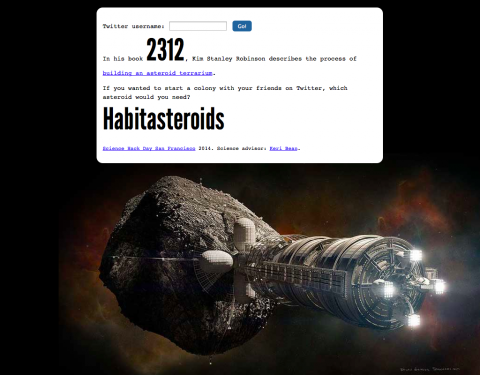Near miss
When I was travelling across the Atlantic ocean on the Queen Mary 2 back in August, I had the pleasure of attending a series of on-board lectures by Charles Barclay from the Royal Astronomical Society.
One of those presentations was on the threat of asteroid impacts—always a fun topic! Charles mentioned Spaceguard, the group that tracks near-Earth objects.
Spaceguard is a pretty cool-sounding name for any organisation. The name comes from a work of (science) fiction. In Arthur C. Clarke’s 1973 book Rendezvous with Rama, Spaceguard is the name of a fictional organisation formed after a devastating asteroid impact on northen Italy—an event which is coincidentally depicted as happening on September 11th. That’s not a spoiler, by the way. The impact happens on the first page of the book.
At 0946 GMT on the morning of September 11 in the exceptionally beautiful summer of the year 2077, most of the inhabitants of Europe saw a dazzling fireball appear in the eastern sky. Within seconds it was brighter than the Sun, and as it moved across the heavens—at first in utter silence—it left behind it a churning column of dust and smoke.
Somewhere above Austria it began to disintegrate, producing a series of concussions so violent that more than a million people had their hearing permanently damaged. They were the lucky ones.
Moving at fifty kilometers a second, a thousand tons of rock and metal impacted on the plains of northern Italy, destroying in a few flaming moments the labor of centuries.
Later in the same lecture, Charles talked about the Torino scale, which is used to classify the likelihood and severity of impacts. Number 10 on the Torino scale means an impact is certain and that it will be an extinction level event.
Torino—Turin—is in northern Italy. “Wait a minute!”, I thought to myself. “Is this something that’s also named for that opening chapter of Rendezvous with Rama?”
I spoke to Charles about it afterwards, hoping that he might know. But he said, “Oh, I just assumed that a group of scientists got together in Turin when they came up with the scale.”
Being at sea, there was no way to easily verify or disprove the origin story of the Torino scale. Looking something up on the internet would have been prohibitively slow and expensive. So I had to wait until we docked in New York.
On our first morning in the city, Jessica and I popped into a bookstore. I picked up a copy of Rendezvous with Rama and re-read the details of that opening impact on northern Italy. Padua, Venice and Verona are named, but there’s no mention of Turin.
Sure enough, when I checked Wikipedia, the history and naming of the Torino scale was exactly what Charles Barclay surmised:
A revised version of the “Hazard Index” was presented at a June 1999 international conference on NEOs held in Torino (Turin), Italy. The conference participants voted to adopt the revised version, where the bestowed name “Torino Scale” recognizes the spirit of international cooperation displayed at that conference toward research efforts to understand the hazards posed by NEOs.











